The Google Pixel 4 XL Review: Stuck In The Past In 2019
by Andrei Frumusanu on November 8, 2019 11:30 AM EST- Posted in
- Mobile
- Smartphones
- Pixel 4
- Pixel 4 XL
Display Measurement
The display of the Pixel 4 is one of the phone’s main features thanks to the 90Hz refresh rate. As mentioned in the introduction, the displays on the Pixel 4 series this year is again dual-sourced between LG and Samsung. The regular Pixel 4 receives an LG panel, while the 4 XL that we’re testing and reviewing today, uses a Samsung display.
Android Q promised to have implemented a new iteration of Google’s colour management system, and for the first time, the Photos app is actually able to properly display wide gamut pictures. Unfortunately, it’s still a very limited system in apps as they cannot display differing gamut pictures side-by-side, so for example the thumbnail view is shown only in sRGB. Most importantly, Chrome by default still doesn’t support wide-gamut content as you have to force it in the engine settings, and this implementation doesn’t use the OS’s CMS handling.
We move on to the display calibration and fundamental display measurements of the Pixel 4 XL screen. As always, we thank X-Rite and SpecraCal, as our measurements are performed with an X-Rite i1Pro 2 spectrophotometer, with the exception of black levels which are measured with an i1Display Pro colorimeter. Data is collected and examined using SpectraCal's CalMAN software.

Starting off with the brightness, the Pixel 4 XL is relatively conservative as it peaks out at 438 nits in all scenarios. It’s again very odd here as Google can’t seem to make up its mind on whether it wants to offer an auto-brightness boost or not. Last year, the Pixel 3 only had it available in its Adaptive mode, whilst this year the Pixel 4 doesn’t offer it all, even though the display drivers actually has the high-brightness mode implemented.
In terms of greyscale calibration and accuracy, on my unit things differed greatly based on brightness. At maximum brightness, the Pixel 4 XL was seemingly quite accurate with good colour balance and gamma reproduction. At our standard 200cd/m² measurement point however, things are quite worse. First off, all there’s a more notable colour shift towards greens on the unit which isn’t great. Following that, there’s also creeping issues with the gamma calibration as it’s non-linear and deviates a lot more from the 2.2 target. What this results in is some shades, especially at the higher levels, appear darker than they should be.
I’ve also noted and captured some sort of bug in the display behaviour; when I was measuring at minimum brightness, I encountered some really bad results. I’ve seen this mentioned by some other reviewers and the issue went away when I toggled the screen refresh rate. The odd thing though, is that I wasn’t able to immediately reproduce it afterwards and results on the new measurements were quite ok. The colour shift the phone took was extremely noticeable at the time the bug took place.

SpectraCal CalMAN
"Natural" Greyscale colours

In terms of dE2000, the biggest culprit to the average 2.29 result for me is the green tint of whites as well as the slightly off gamma.
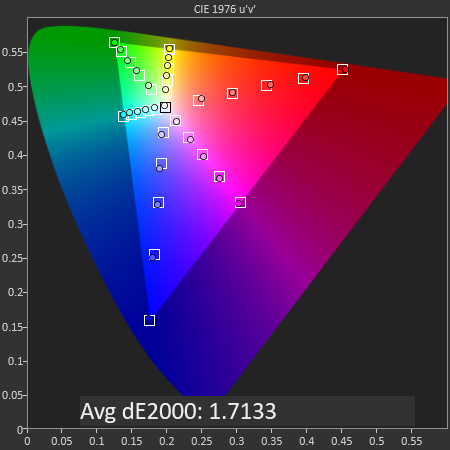
SpectraCal CalMAN
sRGB Gamut
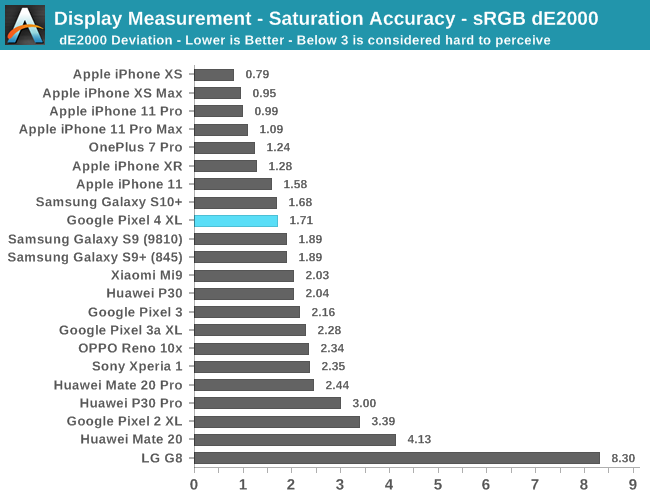
In the sRGB gamut, the Pixel 4 XL does well with a dE2000 of 1.71. The biggest issue again is a shift in the tones towards green, but also seemingly very slight oversaturation of all the tones.
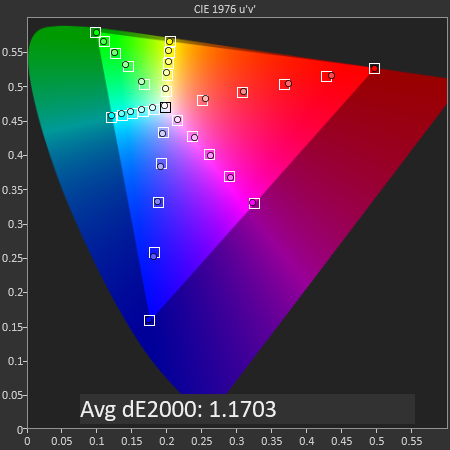
SpectraCal CalMAN
Display P3 Gamut
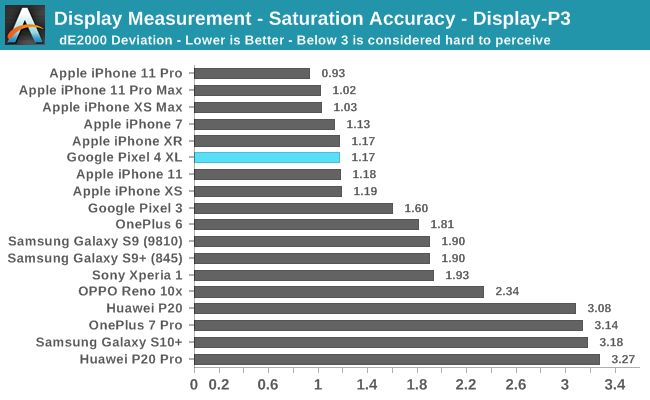
The Display P3 gamut performs a lot better. Here while the green tint is still present, the saturation levels are better and thus the Pixel 4 XL ends up with an excellent dE2000 of 1.17.

SpectraCal CalMAN
Gretag-Macbeth

Finally, in the GMB test, the Pixel 4 XL ends up quite average with a score of 2.34 as it’s showcasing tones that are too dark, a green tint in the whites, with some hue errors for a few tones.
Display Conclusion – Good, but not A+
Overall, the Pixel 4 XL’s display characteristics beyond it’s 90Hz refresh rate are quite average. Whilst Google has been able to improve the calibration compared to what we measured on the regular Pixel 3 last year and the 2 XL the year before that, it’s still quite a bit behind what some other vendors are able to achieve. The display’s lower brightness is also a bit of an issue in direct sunlight as it lacks any kind of boost behaviour. Finally, the remaining characteristics such as viewing angles and sharpness are excellent, but that’s just generally a common characteristic of panels with these specifications.
The results today aren’t really a surprise to me given Google’s track record with the displays on the Pixel series, however it does stand in contrast to what the company was proclaiming at launch: “A+ rating Best Smartphone Display Awards” really doesn’t mean anything at all if, first of all, it’s a sponsored award, and secondly, if the measurements aren’t representative of a random production unit. Make of it what you will.


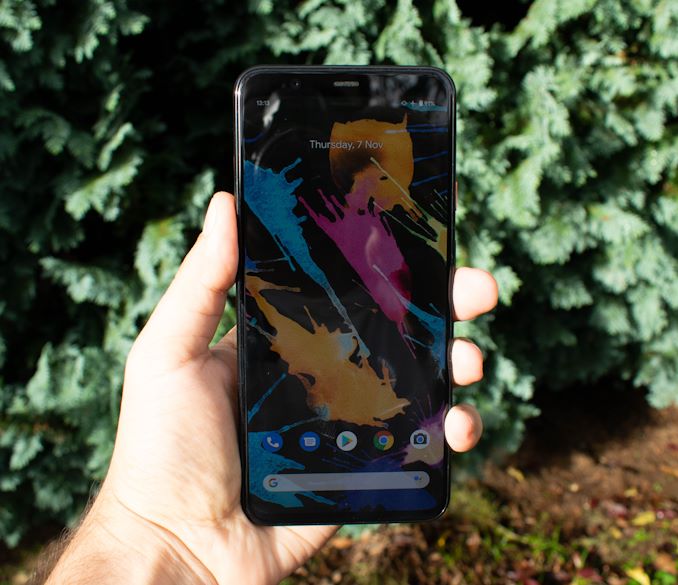
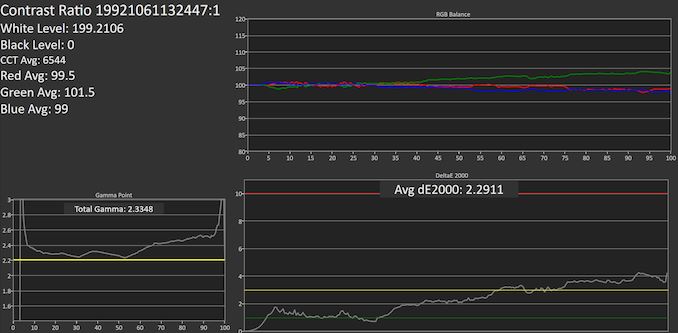
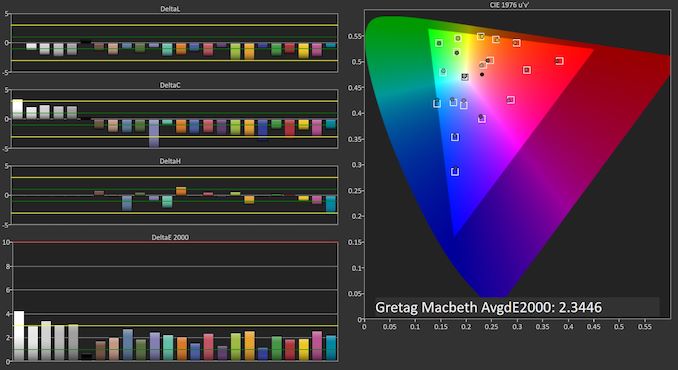








159 Comments
View All Comments
Jonahtrav - Friday, November 8, 2019 - link
has a pixel 3 a user I was excited to see the pixel 4 come out but I usually wait for all the reviews and then decide and have you seen the jerry-rigged video where he test the durability of the pixel 4 and it fails miserably with cracking in four areasOliseo - Sunday, November 10, 2019 - link
Yeah, it's for halfwits.edzieba - Friday, November 8, 2019 - link
Coming from a Pixel 2XL, it ticks all the boxes for me. Performance (in terms of responsiveness rather than sustained benchmarks) is great, 90Hz display is a nice step up, the return of Qi charging means battery life is a nonissue for me (Put it down on the desk, and oh, it's charged when I go to pick it up again), and Soli has thus far been generally useful in a subtle way (activation on reach, and quieting alarms and rings before contact, rather than hand-waving demos). Camera is Good Enough for the few times I take photos. I miss the fingerprint reader for the notification swipe gesture, but it also means I can unlock and authenticate payments (pattern/code unlock is no good here) quickly without taking my gloves off - or even taking the phone out of the mount - to pay for fuel which is a nice convenience.Then there are the alternatives. Iphones are right out, ain't nobody got time to deal with Apple's ecosystem. Samsung (and most others) get the boot due to their glacial update rate and/or OS-fiddling. And as this is by definition a device intended to be network connected continuously, it's either updated or it's PWNed. Out of the manufacturers who are vaguely on the ball when it comes to consistent, reliable and timely updates and don't go messing with the core OS that leaves basically Nokia, Essential, and Sony. Essential seem to be dead for all intents and purposes, Sony still haven't gotten Qi implemented, and Nokia lock their bootloaders (and are still on Android 9).
edzieba - Friday, November 8, 2019 - link
Biggest thing I'm missing is an up/down motion gesture for scrolling recipes with dirty hands.Andrei Frumusanu - Friday, November 8, 2019 - link
> Samsung (and most others) get the boot due to their glacial update rate and/or OS-fiddling. And as this is by definition a device intended to be network connected continuously, it's either updated or it's PWNed.My S10 is on the November security patch since a couple of days. The Pixel 4 XL is still on the October one. People need to get their facts right.
thestryker - Friday, November 8, 2019 - link
I could be wrong, but I believe the point he was getting at is over device lifetime. This is the predominant reason I'm still using my Droid Turbo. Outside of Essential and Google the device makers for android bail on their device OS updates relatively rapidly (ex: Pixel 2 running 10, Galaxy S8 running 9). Samsung seems good about security updates as old devices do get those albeit at lower cadence, but that doesn't mean the devices get OS support.Android in general is a nightmare when it comes to OS support, but the alternative is Apple, so that's a non starter for me. In general it'd be nice if Google did the work to square away OS updates so they could be device independent, but there is no pressure on anyone to do this it seems.
imaheadcase - Friday, November 8, 2019 - link
What does security update have to do with what he said? Andrei security updates are pushed on pixel phones in normal updates as well so its tied into regular autoupdates anyways now.His point is valid, OS specific UI can totally ruin a phone experience, especially when upgrading is not a must have thing for you. Samsung is notorious for not pushing updates, or even down right lying about updating. Look at Tablet line they have..they still sell tablets and make them WITHOUT updates of any kind, despite them constantly saying after a couple years they will unlock them for users.
I have the Pixel 3 and love it, i won't be going to Pixel 4 (want fingerprint unlock). I might consider it for home use if price drops way low.
Andrei Frumusanu - Friday, November 8, 2019 - link
> What does security update have to do with what he said?Because he specifically brought up security concerns?
Sigil224 - Saturday, November 9, 2019 - link
Would an article on this be possible?I’m currently on an iPhone Xs but have been looking at Androids as a change but have had doubts over some of them because of concerns over update cadence due to anecdotal evidence (Samsung, normally) but if that’s not right then that changes things a bit.
Oliseo - Sunday, November 10, 2019 - link
You'll get three years MAX from the BEST android phone OEM (including Google) and that's from the Launch date.Prepare to junk it after 4 years at the latest (and that's a year with no OS upgrade).
And these are BEST CASE SCENERIOS.
Pick the wrong phone and it will be junk soon as you buy it.